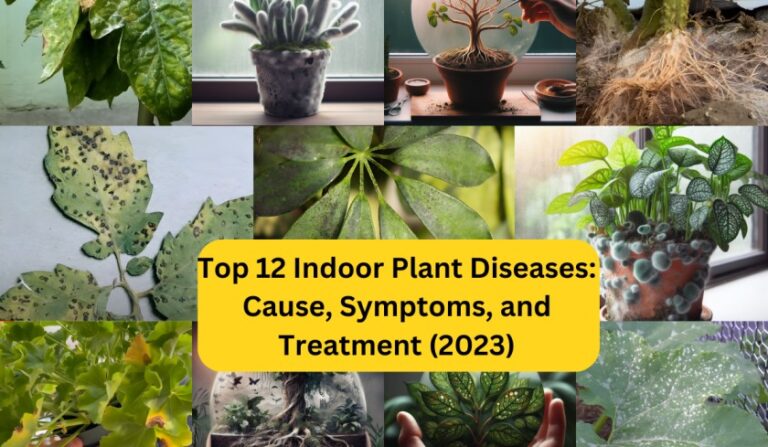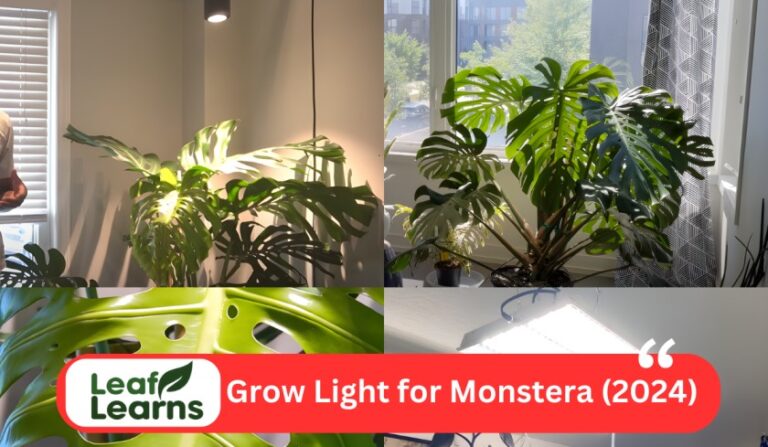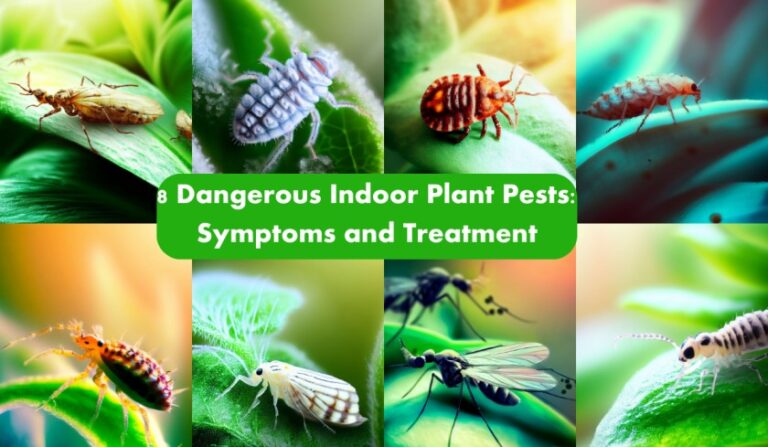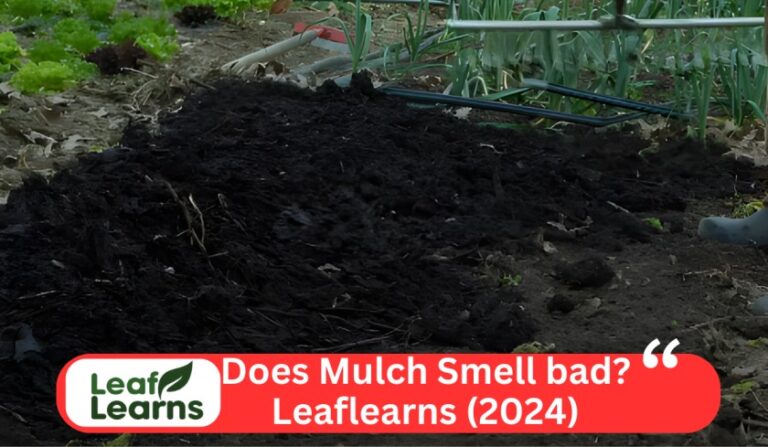Why Are My Plumeria Leaves Turning Yellow with Brown Spots? How To Fix It (2024)
A typical question is “Why Are My Plumeria Leaves Turning Yellow? Causes and How To Fix It?” for gardeners who are actively keeping healthy plumeria plants. The yellowing of plumeria leaves may arise from different causes, including overwatering, shortage in nutrients, insufficient sunlight exposure, pests or even the natural life cycle.
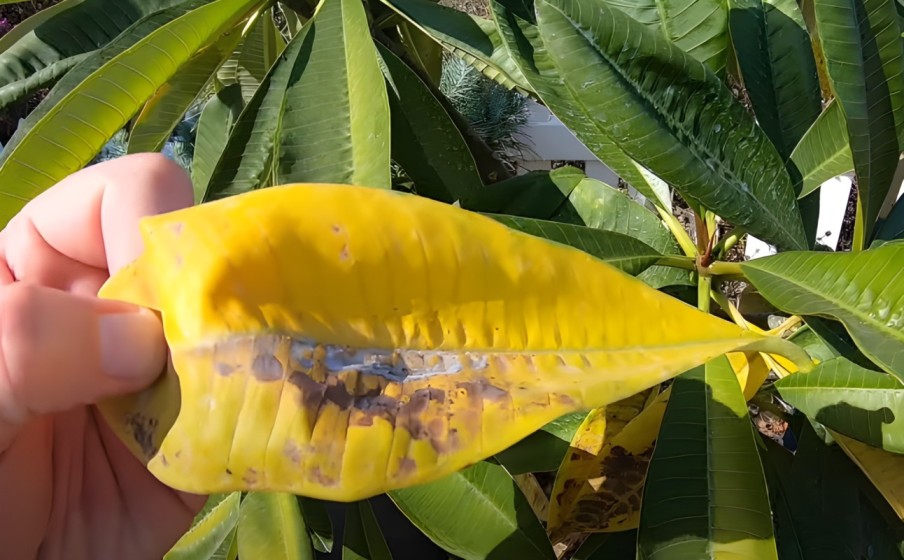
To tackle this problem appropriately, it is necessary to determine the particular reason for yellowing.
Specific actions including re-arranging in regard to watering patterns set, the provision of proper feeding regimes, and making certain that these plants get enough sunlight will generally help solve Plumeria health problems as well as their appearance.
A holistic perspective in the understanding of the causes and a plan for redemption makes it possible to have a healthy plumeria garden.
So here is the main factors that causes the plumeria leaves turning yellow and we can discuss below:
Contents
- 1 Overwatering
- 2 Underwatering
- 3 Improper Sunlight
- 4 Soil Conditions
- 5 Lack of Nutrition
- 6 Root Damage
- 7 Plumeria Rust
- 8 Pest Infestation
- 9 Acclimation
- 10 Natural Life Cycle
- 11 Soil pH Levels Too High
- 12 Root Bound
- 13 Poor Ventilation
- 14 Natural Aging of Leaves
- 15 Cold Damage
- 16 Humidity
- 17 Plumeria Leaves Turning Yellow after Repotting?
- 18 Plumeria Leaves Turning Yellow with Brown Spots: Causes and Care
- 19 Navigating General Plumeria Challenges: Understanding and Addressing Yellowing Leaves
- 20 Mastering Specific Plumeria Care: Unraveling Complexities for Optimal Growth and Health
- 21 Conclusion
- 22 FAQs
- 22.1 What does an overwatered plumeria look like?
- 22.2 How do you fix yellow leaves?
- 22.3 Should I remove damaged plumeria leaves?
- 22.4 What deficiency causes yellow leaves?
- 22.5 Can a yellow leaf turn green again?
- 22.6 What fertilizer makes leaves yellow?
- 22.7 What causes yellowing and brown spots on plumeria leaves?
- 22.8 How can I prevent my plumeria leaves from turning yellow?
- 22.9 What is the best way to treat brown spots on plumeria leaves?
- 22.10 Why do plumeria leaves turning yellow in winter?
- 22.11 How do I identify and treat plumeria rust?
- 22.12 Why do plumeria leaves turning yellow in summer?
Overwatering
One common cause of yellow leaves on plumerias is overwatering. When plants receive more water than they need, the roots can become waterlogged which results in poor nutrient absorption, and oxygen deprivation.
The result? Yellow, drooping leaves signaling stress. Fortunately, addressing this issue is within reach:
How to Fix
- Assess Soil Moisture: Check frequently the soil’s moisture level to ensure that it is not persistently wet.
- Adjust Watering Frequency: let the soil dry before you water it so as not to have waterlogged soil.
- Improve Drainage: The plumeria pot should have enough drainage holes to allow water runoff.
- Choose Well-Draining Soil: Use a well-ventilated potting mix to encourage healthier root systems.
Underwatering
Underwatering could be the culprit. Poor watering disturbs the plant’s vital processes, throwing a yellow color that indicates distress. Fear not! With proper treatment, it is child’s play to resurrect your plumeria.
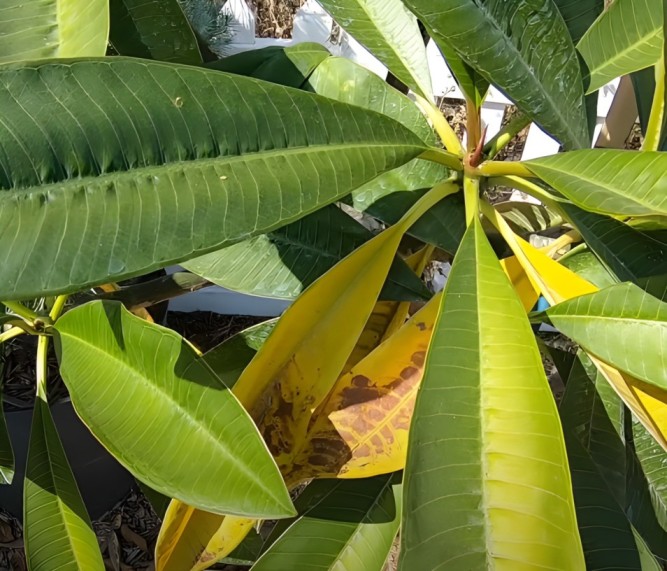
Underwatering Causes
- Inadequate Moisture: The plumerias require constant moisture; without it, they may become yellow.
- Environmental Factors: High temperatures or low humidity increase the demand for hydration, increasing the prospect of underwatering.
How to Fix it
- Adjust Watering Schedule: Make sure to water plants regularly and especially when it is very hot.
- Deep Watering: Let the water permeate into the ground down to where it touches and nourishes the root systems.
- Mulching: Apply mulch to keep moisture and protect roots from heat.
Improper Sunlight
Is the green color of your plumeria leaves fading to an undesirable yellow? Improper Sunlight might be one of the potential causes. The yellowing phenomenon is triggered by Plumerias and they need sunlight to thrive.
Causes
- Insufficient Sun Exposure: Plumerias thrive in full sunlight. The leaves might yellow if they fail to receive adequate nourishment.
- Inconsistent Light: Sudden alterations in the light conditions are stressful to the plant, and it begins yellowing leaves.
How to Fix it
- Optimal Placement: Make sure that your plumeria gets between 6-8 hours of direct sunlight daily.
- Gradual Adjustments: If moving the plant, do so slowly to acclimate
- Consider Artificial Light: Give it artificial light
Soil Conditions
One possible suspect could be the conditions of your soil. Plumerias are very particular about their soil issues such as poor drainages and nutrient deficiencies can bring those yellow leaves.

Soil Conditions: Why the Yellow?
- Drainage Woes: Yellowing can happen when stagnant water is present around the roots.
- Nutrient Imbalance: Leaf color can be affected due to inappropriate or excessive nutrients.
How to Fix it
- Well-Draining Soil: Amend with perlite for better drainage.
- Balanced Fertilization: Use a balanced, slow-release fertilizer.
- Regular Checks: Monitor soil moisture content and nutrient level.
Lack of Nutrition
Have you ever wondered why your beautiful leaves of Plumeria leaves turning yellow? Lack of proper nourishment is one usual cause which steals your tropical beauty from its essential components.
Causes of Lack of Nutrition
- Inadequate soil nutrients.
- Insufficient fertilizer application.
- Poor nutrient absorption resulting from compaction of the soil.
How to Fix it
- Choose Quality Fertilizer: Pick a balanced, slow-release fertilizer that has all the necessary nutrients.
- Regular Feeding: During the growing season, feed your plumeria every 2-4 weeks.
- Correct Soil pH: Ensure the soil pH is 6.0-7.0 for efficient nutrient uptake.
- Mulch Application: Mulch conserves moisture and enhances nutrient availability.
- Avoid Overwatering: The overuse of water can result in the leaching of nutrients; ensure that you only water when the topsoil is dry.
Root Damage
Root damage is a common cause of plumeria leaves turning yellow. Discolored items appear as the plant has trouble absorbing nutrients because of damage to its roots. Knowing the cause is vital to nursing, that is bring your plumeria back to health.
Root Damage Causes
- Overwatering: Over moisture may rot roots.
- Poor Drainage: Poor drainage slows down oxygen movement to roots.
- Physical Injury: Damage during transplanting of plants or gardening activities.
How to Fix it
- Adjust Watering: Allow it to dry between waterings and ensure that the soil drains well.
- Improve Drainage: Add gravel or sand to improve soil drainage.
- Inspect for Pests: Treat root-feeding pests promptly.
- Replant Carefully: Transplant with caution, so as not to disturb the roots.
Plumeria Rust
Several factors can lead to Plumeria leaves turning yellow and one common cause of this condition in these tropical plants is Plumeria Rust, a fungal disease.
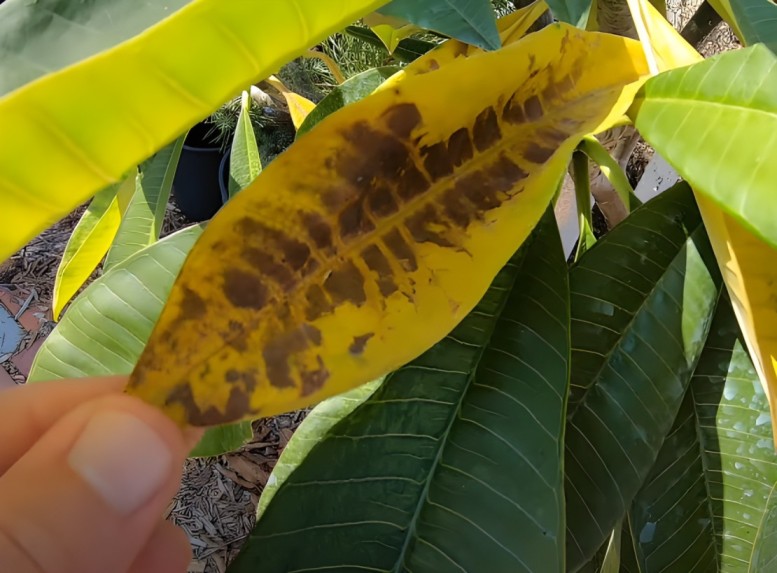
Plumeria Rust looks as yellow orange spots on lower sides of leaves with discoloration and premature leaf drop.
How to Fix it
- Fungicide Application: To control Plumeria Rust effectively, use a copper-based fungicide.
- Pruning Affected Leaves: Cut infected leaves and throw them away to prevent the spread of fungi.
- Adequate Air Circulation: Make sure that there is proper spacing between plants for better airflow and lower humidity.
- Well-Draining Soil: Choose well draining soil so that there are no waterlogged conditions, thus reducing the chances of fungal growth.
- Morning Watering: Morning water to enabling foliage drying throughout the day thus preventing mildew formation.
Pest Infestation
Have you ever wondered why your bright plumeria leaves turning yellow? A one possible cause could be an annoying infestation by pests that would upset your plant’s pretty health.
Pests that can dine on your plumeria are aphids, spider mites, or whiteflies leaving stress and discolored leaves.
How to Fix it
- Inspect Regularly: First, check for pests regularly especially on the under surfaces of leaves.
- Natural Predators: Use beneficial insects such as ladybugs to control pest populations.
- Neem Oil Treatment:
- Soap and Water Mix: Form a solution of soapy water to get rid of pests without killing your plumeria.
Acclimation
People often attribute the acclimation process to Plumeria leaves turning yellow. When a plumeria undergoes any sort of change in the environment, like transitioning from indoors to outdoors or vice versa, it may become stressed and develop yellow leaves. This is particularly evident in newly purchased or moved plants.
How to Fix it
- Gradual Exposure: Introduce your plumeria slowly to its new surroundings in order to minimize shock.
- Optimal Sunlight: Make sure that they receive the right amount of sun; plumerias prefer full sun.
- Proper Watering: Do not water them too much or too little.
- Nutrient Boost: Supply a well-balanced fertilizer that will aid in recovery.
- Monitor Humidity: Make adjustments on humidity, especially in indoor environments.
Natural Life Cycle
You can understand from the fact that Plumeria leaves turning yellow indicate seasonal changes or transitions. As the seasons change, plumeria may enter a dormancy stage or fall off older leaves causing yellowing. Understanding this natural phenomenon allows us to differentiate it from possible problems requiring intervention.
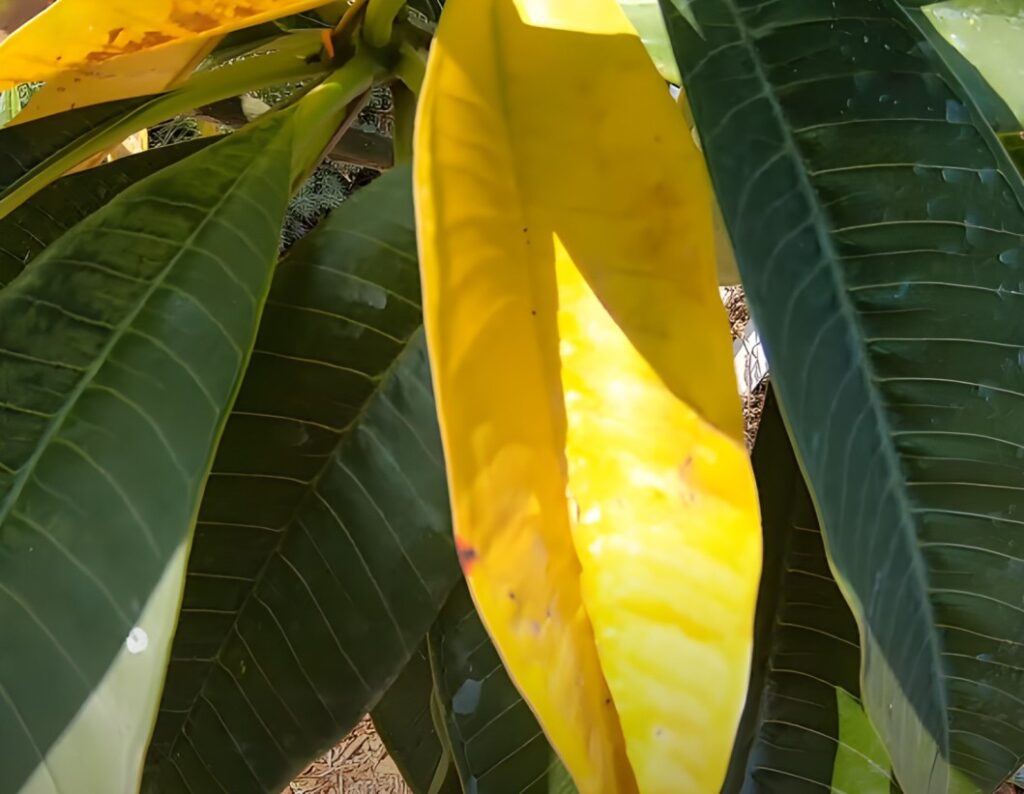
How to Fix it
- Patience is Key: Let the plant go through its natural cycle without worrying right away.
- Proper Watering: Limiting the watering frequency to an extent where there is no overhydration of the plant during dormancy.
- Nutrient Boost: Use a balanced fertilizer to feed the plumeria while it grows.
- Sunlight Exposure: Make sure there is ample sunlight, as this is an essential aspect of the plant’s recuperation.
Soil pH Levels Too High
One potential suspect might be high soil pH. If the soil becomes too alkaline, it results in poor nutrient availability, yellowing leaves and stops growth.
How to Fix it
- Test Your Soil: First off, ascertain the pH level of your soil to ensure that it is alkaline.
- Amend with Elemental Sulfur: Add elemental sulfur slowly to reduce pH.
- Incorporate Organic Matter: Use organic matter like compost or well-rotted manure to increase the acidity of your soil.
- Choose Acidic Fertilizers: Balance nutrient uptake by opting for fertilizers designed for plants that love acid.
Root Bound
Does your plumeria leaves turning yellow? might be the cause of a common woe – being root bound. When the roots begin to fill up their container, it becomes difficult for them to absorb nutrients and this causes yellow foliage.
How to Fix it
- Repotting: Provide your plumeria with room to prosper.
- Loosen Roots: Loosen entangled roots gently to promote healthy growth.
- Fresh Soil: Use well-draining soil to enhance the absorption of nutrients.
- Root Pruning: When repotting, trim overly large roots to allow for the best use of space.
- Balanced Fertilization: Replenish nutrients with a balanced fertilizer
Poor Ventilation
Is the shine on your plumeria leaves fading? It may be due to poor ventilation. Various problems can appear if the plumeria plants do not receive proper air circulation around them, such as yellowing leaves.
Stale air supports moisture retention, making fungal infections more likely and disrupting the plant’s health due to retained moisture.
How to Fix it
- Prune for Airflow: Remove crowded branches to make room and enhance airflow.
- Strategic Plant Placement: Ensure that there is enough room between plumeria plants for airflow.
- Consider Windbreaks: Plant windbreaks using shrubs or other plants strategically to direct the airflow.
Natural Aging of Leaves
When your plumeria leaves turning yellow color, one possible reason is due to natural aging. Plumeria leaves, as with any other plant, have a life cycle and yellowing is normal for aging.
How to Fix it
- Pruning: Eliminate yellow leaves to foster new sprouts.
- Fertilization: Replenish nutrients by using balanced fertilizer.
- Proper Watering: Water as often, but not overly.
- Soil Inspection: Check soil quality and drainage.
Cold Damage
One potential suspect is Cold Damage in colder climates or during unexpected cold waves. Plumerias are tropical plants, and cold temperatures can cause stressful effects that bring the yellowing effect.
How to Fix it
- Sheltering: During colder periods, shield your plumeria by moving it indoors or placing temporary cover over it.
- Mulching: Place an organic mulch around the base to blanket the soil and shield the roots.
- Gradual Exposure: Gradually introducing your plumeria to colder temperatures is essential.
Transplant Shock
Are your bright plumeria leaves turning yellow? Transplant Shock is a common cause. When plumerias are moved, their leaves may become yellow as a signal of distress. Fear not; here’s a guide on how to remedy this issue:
Why It Happens:
- Root Disruption: Transplanting can disrupt the fine root system which affects the way nutrients are taken up by them.
- Environmental Change: An abrupt change in the level of sunlight, amount of humidity or temperature could cause much strain on plants.
How to Fix it
- Gentle Watering: Ensure regular watering but gentle to assist in the recovery of roots.
- Appropriate Nutrients: Support new growth with a balanced fertilizer.
- Shade Protection: Protect your plumeria from bright sunlight for a while.
Humidity
Often, the glossy green of plumeria is replaced with yellowing leaves which are a common symptom of high humidity levels. Too much moisture can cause fungal problems, which not only affect the nutrient absorption but also cause stress.
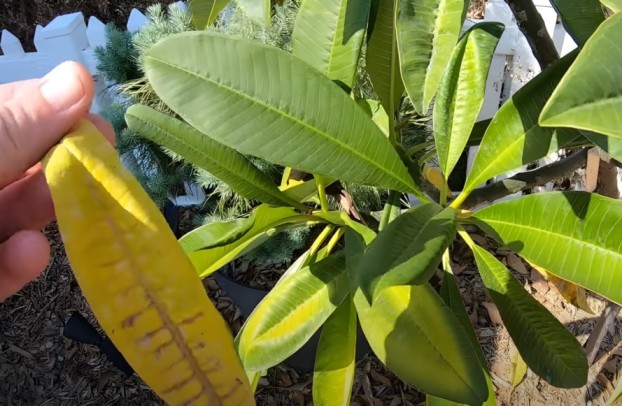
How to Fix it
- Well-Draining Soil: Choose soil with fast drainage to avoid waterlogging.
- Strategic Watering: Allow plumeria to get dry during the day, that’s why it should be watered in morning times only.
- Adequate Air Circulation: Trim the close by plants, space them well so that air flows freely.
Plumeria Leaves Turning Yellow after Repotting?
Plumeria leaves turning yellow after repotting can be a common stress response. The plant undergoes shock due to changes in its environment, including altered soil conditions and potential root disturbance during the transplant. Yellowing is often temporary, and with proper care, the plant should recover over time.
Plumeria Leaves Turning Yellow with Brown Spots: Causes and Care
The view of yellow leaf dotted with brown spots in plumeria can discourage anyone because it means a problem that needs to be solved.
Causes
- Fungal Infections: Yellowing with brown spots can be caused by fungi such as rust or leaf spot diseases.
- Overwatering: Extreme moisture in the soil provides suitable conditions for fungi and might lead to root rot.
- Nutrient Deficiencies: A yellowing with brown spots can be caused by the insufficient presence of some of the essential nutrients, especially magnesium or iron.
- Pests: Insect infestations, like spider mites or aphids, will cause the leaves to be damaged and sometimes turn yellow.
Care:
- Addressing plumeria leaves with yellowing and brown spots involves a comprehensive care approach:
- Pruning: Cut off infected leaves to contain infections and enhance airflow.
- Fungicide Application: Appropriate fungicides should be used to treat fungi issues based on the recommended protocol.
- Proper Watering: Make sure the soil is well-draining and water moderately but let the topsoil dry between each watering.
- Nutrient-Rich Soil: Use a balanced fertilizer to add the necessary nutrients and correct any deficiencies.
- Pest Control: Use natural or chemical elimination of pests to ensure the overall health of plants.
Plumeria enthusiasts often encounter general issues that can impact the health of their plants. One common concern is the yellowing and falling off of plumeria leaves, a symptom that may indicate various underlying problems.
It could be attributed to factors such as changes in environmental conditions, nutrient deficiencies, or even improper watering. Additionally, plumeria leaves may exhibit curling and yellowing, raising questions about the plant’s well-being.
Gardeners may wonder why the leaves on their plumeria plant are turning yellow, especially after repotting. This shift in coloration could be a response to the stress of the transplant, nutrient adjustments, or changes in the root system.
Understanding the specific care needs of plumeria plants is crucial to address issues like leaves turning yellow during flowering or in different seasons. Gardeners often seek solutions to preserve the vibrancy and health of their plumeria, emphasizing the importance of tailored care.
Mastering Specific Plumeria Care: Unraveling Complexities for Optimal Growth and Health
For those dealing with specific plumeria care issues, attention to detail becomes paramount. Yellowing leaves may not only indicate general stress but can also be a result of specific care-related problems. Leaves turning yellow with brown spots may signify a combination of issues, such as fungal infections or nutrient imbalances.
Potted plumeria plants, with their confined space and controlled environment, may face unique challenges, leading to leaves turning yellow quickly or exhibiting unusual growth.
Gardening enthusiasts may encounter concerns like leaves turning up yellow or leaves turning yellow in the UK, emphasizing the need for region-specific care and considerations.
Addressing these specific plumeria care issues involves a holistic approach, encompassing factors like soil conditions, watering practices, and exposure to sunlight, all tailored to the plant’s unique requirements.
In the realm of other plumeria-related keywords, there is a diverse range of aspects to explore. From the symbolic meanings associated with plumeria, known as plumeria divine, to considerations like soil type (plumeria erde) and the vibrant colors of leaves (plumeria leaves turning dark yellow), enthusiasts delve into various facets of plumeria cultivation.
Questions about edible plumeria leaves or the significance of specific colors, such as plumeria leaves turning yellow edible or plumeria leaves turning light yellow, highlight the curiosity and attention to detail that characterize the plumeria community.
These keywords encompass not only the physical aspects of the plant but also the cultural and aesthetic dimensions that make plumeria cultivation a multifaceted and engaging endeavor.
Conclusion
It’s critical to solve issues like overwatering, nutritional shortages, and inadequate sunshine for a plumeria garden to thrive.
Customise your strategy by identifying the root reasons and putting fixes in place, such as changing the way you water, improving drainage, and making sure your plants receive the most sunshine possible.
A flourishing plumeria garden also requires knowing natural life cycles, keeping up with soil conditions, and being vigilant against pests. To keep your plumeria plants looking beautiful and healthy, you need to have a well-rounded care plan and an acute eye for symptoms.
FAQs
What does an overwatered plumeria look like?
Poor nutrition absorption can result from yellowing leaves, a drooping look, and root rot in an overwatered plumeria.
How do you fix yellow leaves?
Examine the root problem, such as pests, nutritional shortages, overwatering, or underwatering, in order to address yellow leaves. Effective repair requires modifying watering schedules, supplying the right nutrients, and addressing any possible problems.
Should I remove damaged plumeria leaves?
Yes, in order to improve air circulation, stop the spread of disease, and support general plant health, damaged plumeria leaves should be removed.
What deficiency causes yellow leaves?
Yellow leaves in plumeria plants might be a sign of nutrient shortages, particularly in magnesium or iron.
Can a yellow leaf turn green again?
No, a leaf cannot become green again once it goes yellow. On the other hand, further yellowing of young leaves can be avoided by treating the underlying problem.
What fertilizer makes leaves yellow?
Yellowing leaves can result from fertilisers high in nitrogen, especially when applied excessively.
What causes yellowing and brown spots on plumeria leaves?
Numerous things, including as fungal infections, overwatering, nutritional imbalances, and insect infestations, can result in plumeria leaf yellowing and dark patches.
How can I prevent my plumeria leaves from turning yellow?
Maintaining well-draining soil, modifying watering frequency, giving appropriate nutrients, and making sure plumeria leaves receive enough sunshine are all important ways to keep their leaves from becoming yellow.
What is the best way to treat brown spots on plumeria leaves?
Pruning impacted areas, using fungicides, adhering to appropriate watering procedures, and making sure adequate air circulation are the ways to address brown spots on plumeria leaves.
Why do plumeria leaves turning yellow in winter?
Due to decreased sunshine, lower temperatures, and the plant being dormant, plumeria leaves may become yellow in the winter. Getting enough sunshine and modifying care as necessary will help avoid too yellowing.
How do I identify and treat plumeria rust?
Yellow-orange patches on the undersides of leaves are indicative of plumeria rust. Apply fungicides based on copper, trim any damaged leaves, make sure there is enough space for air to circulate, and use soil that drains well.
Why do plumeria leaves turning yellow in summer?
Summertime plumeria leaf discoloration can result from elevated solar radiation levels, stress, and dehydration. Higher temperatures may also have an impact on the plant’s ability to absorb nutrients and maintain its water balance, which might exacerbate the yellowing problem.



